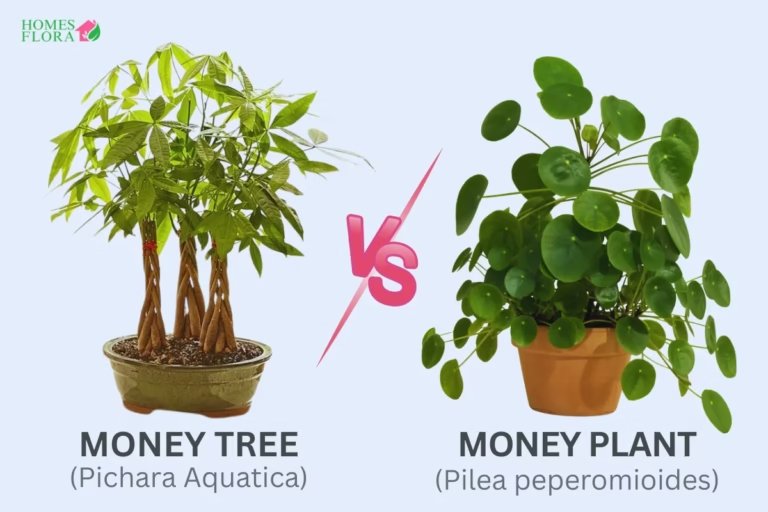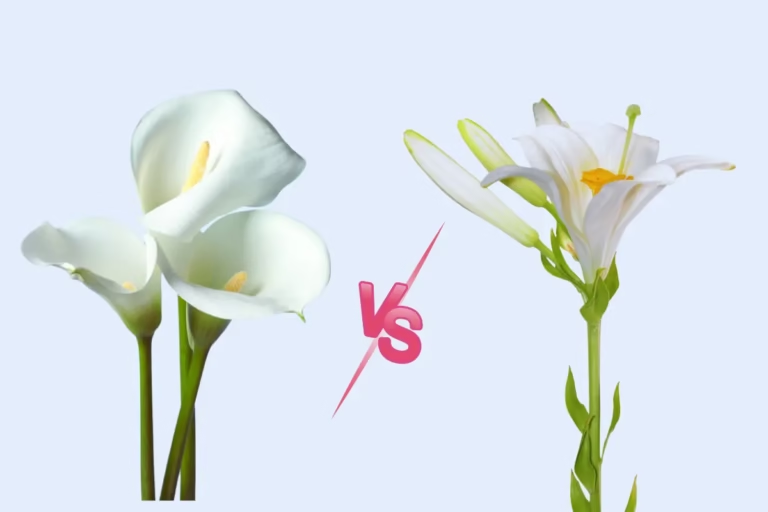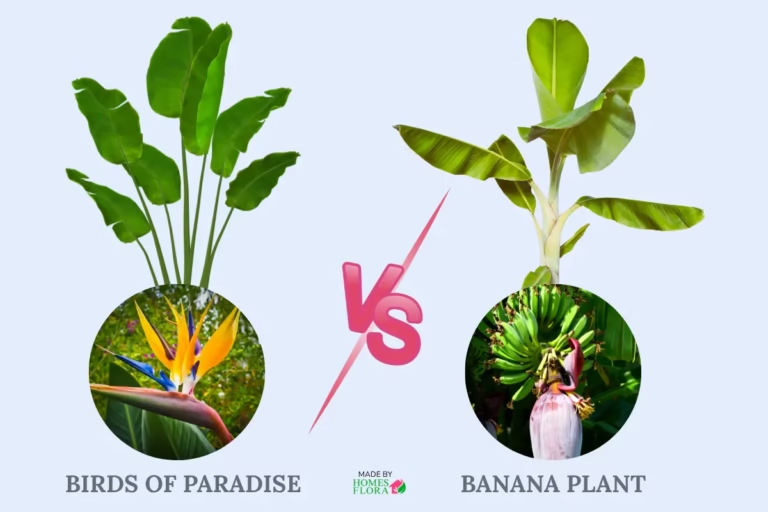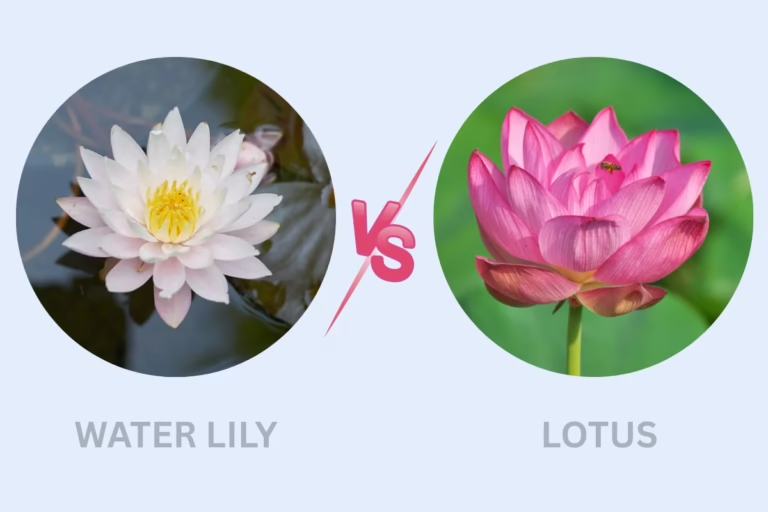Peace Lily vs Prayer Plant: Key Differences and Similarities
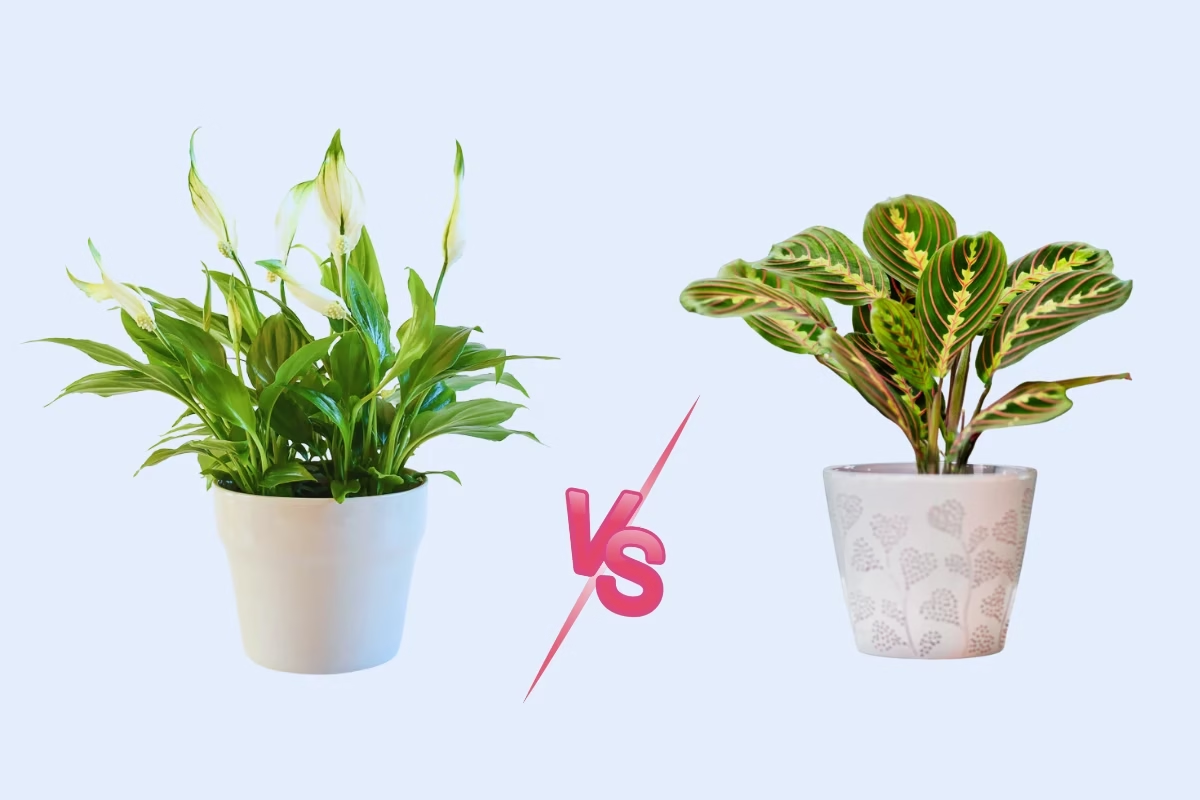
Torn between a peace lily and prayer plant? Here’s the quick truth: Peace lilies are tougher (they’ll droop dramatically when thirsty but bounce back fast), thrive in low light, and bloom white flowers—but are mildly toxic to pets. Prayer plants demand more attention (they need humid air, distilled water, and bright indirect light), won’t flower, but are pet-safe with stunning patterned leaves. Want the easy choice? Grab a peace lily. Prefer a challenge with dazzling foliage? Go prayer plant. We’ll explain exactly why—with science-backed care tips—so you leave knowing which one truly fits your life.
Table of Comparison between Spathiphyllum and Maranta leuconeura
Category | Peace Lily | Prayer Plant |
|---|---|---|
Scientific Name | Spathiphyllum spp. | Maranta leuconeura |
Origin | Tropical Americas | Brazilian rainforests |
Appearance | Glossy leaves + white flowers | Red-veined leaves |
Light | Low/medium indirect | Bright indirect |
Water | When droops | Keep soil moist |
Humidity | Tolerates average | Needs >50% |
Soil | Well-draining | Peat-based + perlite |
Toxicity | Mildly toxic | Pet-safe |
Air Purifying | NASA-approved | Moderate |
Blooms | White spathes | Rare/none |
Lifespan | 5-10+ years | 3-5 years |
Best For | Beginners/offices | Humid spaces/pet owners |
what about peace lily?
The peace lily is a top feng shui plant, believed to purify energy and promote tranquility with its lush dark green foliage and serene white flowers. Its upward-growing leaves symbolize growth, while its ability to thrive in low light aligns with feng shui’s balance principles.

Place it in bedrooms or offices to reduce stress and negativity—just avoid direct sunlight (it scorches leaves!) and keep it away from pets (mildly toxic). A perfect harmony of beauty and mindful energy!
what about prayer plant?
Meet the prayer plant (Maranta leuconeura)—a mesmerizing tropical indoor plant known for its variegated leaves that ‘pray’ by folding upward at night! Unlike the peace lily, it boasts stunning red-veined or patterned foliage (though it’s a non-flowering houseplant). This pet-safe beauty thrives in bright indirect light and high humidity—perfect for terrariums or bathrooms.

While it demands more attention (distilled water, no soggy soil!), its living artistry makes it a favorite among plant enthusiasts. Feng shui lovers value its rhythmic leaf movements for promoting positive energy flow!
Prayer Plant Versus Peace Lily
Physical Appearance
This statuesque beauty with spear-like, glossy dark leaves and those elegant white ‘flowers’ (actually a spathe hiding its true flower spike)? That’s your Peace Lily. Notice how its leaves stand proud but dramatically slump when thirsty—it’s the diva of houseplants. The white ‘flag’ of surrender when it needs water!
Now this little showstopper? Those oval leaves painted with brushstrokes of red veins, like nature’s watercolor—that’s your Prayer Plant. Watch closely at dusk—its leaves will slowly rise like praying hands. No flowers here, just living art that dances daily.
Sun and Light Needs
Keep this one in your dimmest corner—it thrives in low light (north-facing windows are perfect). Morning sun? Fine. Afternoon sun? Its leaves will scream with brown burns. Water when it dramatically droops—it’s a terrible actor.
This drama queen needs bright indirect light (east/west windows). No direct sun—it’ll fade its red veins. Dark room? Its leaves will stop ‘praying’. Craves humidity—bathrooms or kitchens are its happy place.
Watering Needs
This one’s a thirsty drama queen. Water the peace lily when leaves droop like a fainting Victorian lady—usually once a week. Soak thoroughly until it drains out the bottom. But beware: soggy soil = root rot. Let it dry slightly between drinks.
This diva’s picky—water with distilled or rainwater (tap water leaves brown tips). Keep soil consistently moist (not wet!) every 5-7 days. Lift the pot—lightweight? Time to water. Crispy edges? More humidity, not more H2O.
Soil and Humidity
This one’s easygoing—any well-draining potting mix works, but toss in perlite for breathability. Keep it lightly moist, not swampy. Humidity? It tolerates average homes but perks up with occasional misting (bathrooms are its spa day).
This fussy artist needs airy, slightly acidic soil (mix peat moss + perlite + orchid bark). Humidity? Non-negotiable—below 50% and its leaves crisp like burnt paper. Terrariums/pebble trays are its lifeline.
Lifespan
Spathiphyllum lives 5–10 years (some reach 20+ with perfect care!). Older plants get leggy—divide them every 2–3 years to stay lush. Signs of aging? Yellowing lower leaves (just pluck ’em).
This one’s a 3–5 year performer. It grows fast but burns out quicker. Keep it thriving by propagating cuttings yearly—snip a stem, root in water, and replant for immortality!”
Death Alerts:
Peace Lily: Sudden collapse = root rot (overwatering).
Prayer Plant: Sparse growth + crispy leaves = exhausted (propagate or compost).
Air purifying Quality
For air purification, peace lilies are NASA-proven to remove toxins like formaldehyde and even oxygenate at night – ideal for bedrooms (but keep away from pets). Prayer plants offer gentler air cleaning while boosting humidity, plus they’re pet-safe. Place either plant every 100 sq ft for best results. For more plants to find the best one explore our guide on Madonna lily vs calla lily.
poisonous Behavior
Peace lilies are mildly toxic if eaten (can irritate pets’/kids’ mouths), so keep them elevated. Prayer plants are completely safe—the clear choice for pet owners. Always wash hands after handling peace lilies to prevent sap irritation.
Issues & Quick Fixes for Peace Lily & Prayer Plant
Peace Lily Problems:
- Yellow leaves: Overwatering or old age—let soil dry out between drinks.
- Brown tips: Low humidity or tap water chemicals—use filtered water + mist leaves.
- No blooms: Needs more indirect light or fertilizer—try a brighter spot + monthly feed.
Prayer Plant Problems:
- Curling leaves: Underwatered or low humidity—soak soil + use a pebble tray.
- Crispy edges: Dry air or tap water—switch to distilled/rainwater + boost humidity.
- Faded patterns: Too much direct sun—move to bright, indirect light.
Shared Enemies:
- Spider mites: Wipe leaves with neem oil spray.
- Root rot: Ensure pots drain well—no soggy soil!
Pro Tip: Observe leaves daily—they’ll tell you what’s wrong!
which one is best? Spathiphyllum or Prayer Plant
Choose a PEACE LILY if you:
- Want low maintenance – Forgiving if you forget to water (it droops as a reminder!).
- Have low light – Thrives in dim corners (north-facing rooms, offices).
- Need air purification – Best for removing toxins (NASA-approved).
- Love flowers – White blooms add elegance (sporadically year-round).
- Don’t have pets – Mildly toxic if eaten (keep away from cats/dogs).
[product_page id=”3572″]
Choose a PRAYER PLANT if you:
- Can give attention – Needs humidity, distilled water, and bright indirect light.
- Want visual drama – Red-veined leaves move daily (like living art!).
- Have pets – 100% non-toxic (safe for curious cats/dogs).
- Live in humid climates – Loves bathrooms or kitchens (or use a humidifier).
- Prefer foliage over flowers – Rarely blooms, but leaves steal the show.

Still Unsure? Ask Yourself:
- “Do I often forget to water?” → Peace Lily.
- “Do I love watching plants move?” → Prayer Plant.
- “Is my room dark?” → Peace Lily.
- “Do I own a humidifier?” → Prayer Plant.
Final Tip: Start with a peace lily if you’re a beginner; try a prayer plant once you’re confident!

